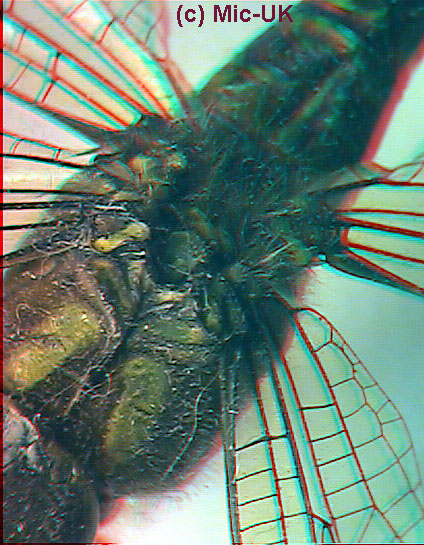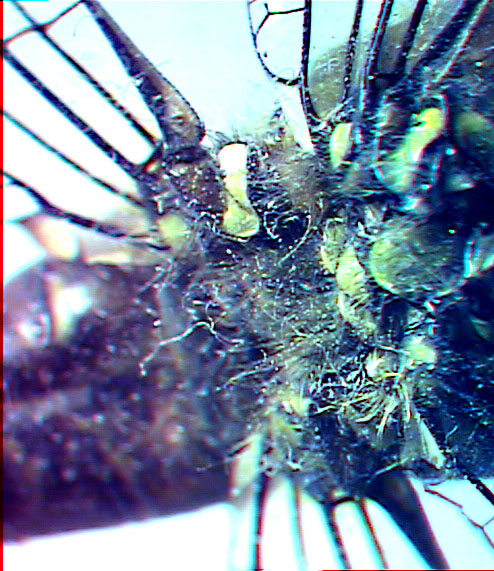When Dragons fall from the sky |
|||||
A 3D article by Maurice
Smith - March 2000
|
|||||
Although Dragonflies are much remembered, once seen, for their large complex eyes - it is in fact their flight capabilities which place them in a class of their own. Their speed and agility on the wing are virtually unmatched (except by a few varieties of flies) by any other insect. They can glide, hover, perform startling aerobatics, and can even fly backwards. Yet for all this, their flight mechanisms especially those involved with hovering and manoeuvring at high speed, is incompletely understood. Dragonflies have large wings. This allows them to be economical in terms of energy expended per meter of distance traveled. It has been estimated that for an average-sized American emperor dragonfly, a power rating of 0.039 Watts is available for flight. Such a large demand for power needs to be supported by systems able to deliver fuel and oxygen rapidly! Flight is fueled by carbohydrates or by fats. Migrating Dragonflies store large deposits of fats which seems to be the 'fuel of choice' for long flights. A highly modified tracheal system is required to deliver oxygen to the wing muscles at a rate fast enough to sustain flight at high speeds. |
|||||
|
|||||
"A fallen Dragon! Halteres and wing muscles!" |
|||||
Air is driven in and out of the tracheae through open spiracles, keeping the muscles supplied with oxygen, through the action of the thoracic plates. These move vertically and sideways in reaction to the wing beat causing volume changes in the thorax - (not quiet a jet engine but a very efficient fuel supply mechanism). Dragonflies need lots of heat. On cold overcast days, it is unlikely to see them in flight. Large hawkers are unable to fly if their thorax (above) is below 30 deg. C. and darters (smaller dragonflies) need at least 16 deg. C. Sun-basking by perched dragonflies can help to raise the temperature on the thorax 5 deg. C. more than the surrounding air. It is quite common to see many dragonflies perched in parallel, often on rocks where additional heat can be absorbed! |
|||||
|
|||||
"A fallen Dragon! Halteres and wing muscles! Close-up." |
|||||
A 3D easy-read article by Maurice Smith |

